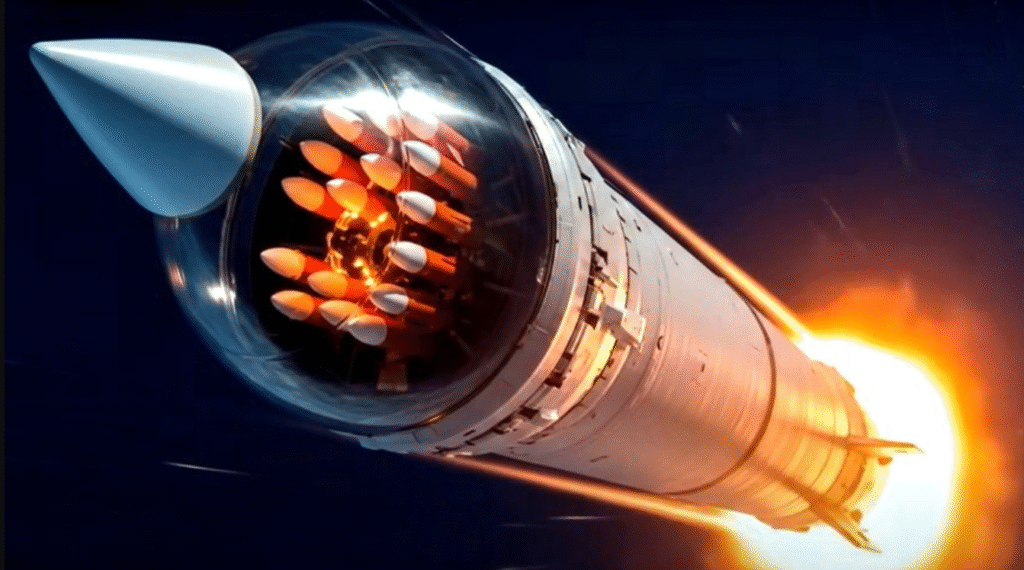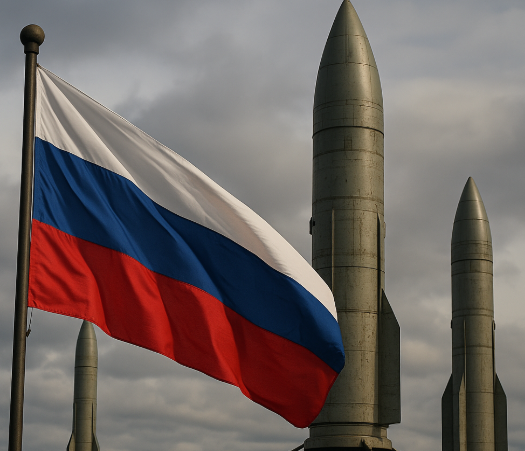Russia’s mysterious “Dead Hand” nuclear system—also known as the Perimeter—is one of the most terrifying Cold War relics ever created. Designed to automatically launch a massive nuclear counterstrike even if the Russian leadership is wiped out, this doomsday device is back in global headlines. Former Russian President Dmitry Medvedev recently warned U.S. President Donald Trump about the system’s existence, prompting the United States to deploy two nuclear submarines near Russian territory. In this blog, we explain what the Dead Hand is, how it works, its Cold War origins, and why it’s suddenly relevant again in 2025.
Inside Russia’s ‘Dead Hand’: The Secret Nuclear System That Could End the World Automatically
In a development that has reignited Cold War anxieties, the decades-old Russian nuclear retaliation system known as the “Dead Hand” is back in the headlines. Former Russian President Dmitry Medvedev recently issued a stark warning to US President Donald Trump, referencing the Dead Hand system and its destructive capabilities. Following the warning, the United States deployed two nuclear-armed submarines near Russian territory—an unmistakable show of force and a signal that the nuclear chessboard may once again be active.
To understand the gravity of this situation, one must go back to the Cold War, when the world was effectively split in two—one side led by the United States, the other by the Soviet Union. In this bipolar world, nations not aligned with either power bloc were labeled “Third World” countries, a term originally used not as a marker of economic status but as a geopolitical designation.
During this time, one thing both the US and USSR loved to do was escalate tensions. When one side built more nuclear weapons, the other responded by building even more. If the US stationed missiles in Europe, the Soviets moved theirs to Cuba. This tit-for-tat arms race reached fever pitch in the 1980s when US President Ronald Reagan introduced a provocative idea called the Strategic Defense Initiative (SDI), more popularly known as Star Wars.
SDI envisioned a futuristic missile defense system positioned in space that could shoot down incoming nuclear missiles before they reached American soil. The idea, while technologically ambitious and never fully realized, succeeded in terrifying Soviet leadership. It threatened to render their nuclear deterrent useless. If the United States could neutralize incoming warheads, it could theoretically launch a first strike and still defend against a counterstrike.
In response, the Soviet Union reportedly developed a countermeasure so grim it sounded like science fiction. It was called “Mertvaya Ruka” or “Dead Hand.” Formally known as “Perimeter,” this semi-automated system was built to guarantee total nuclear retaliation even if the Soviet Union’s command structure was completely obliterated in a first strike.
The details surrounding Dead Hand remain murky. The Russian government has never officially confirmed its existence. However, numerous interviews with former Soviet military officers, investigative journalism, and declassified documents strongly suggest that it became operational around 1985.
At its core, Dead Hand was a primitive but deadly computer network designed to monitor the environment for signs of a nuclear attack. Once manually activated by Soviet military officers during a period of heightened tension, the system remained online for about 15 minutes before going dormant again. During this window, it would monitor input from various sensors across the Soviet Union that tracked air pressure, seismic activity, and, most crucially, radiation levels.

If these sensors detected evidence of a nuclear strike, and if the system could no longer communicate with Soviet high command, it would automatically initiate a retaliatory strike. The way it worked was chilling: four command missiles would be launched to fly across Soviet territory, broadcasting launch signals to hidden nuclear missile silos scattered throughout the country. These silos would then fire their warheads toward pre-programmed targets in the United States and its allies—regardless of whether anyone remained alive in Moscow to approve the strike.
This is why the system earned the name “Dead Hand”—because it could launch an apocalypse even if all human hands had perished.
What makes the situation even more unsettling is that the system may still be operational. At least one retired high-ranking Soviet official has confirmed its continued existence. The Russian government remains silent on the matter, refusing to deny or confirm the rumors.
Fast forward to August 2025, and we see the same ominous specter re-emerging. Dmitry Medvedev, now a senior Kremlin official, reportedly invoked the Dead Hand system in a pointed warning to US President Donald Trump, amid rising tensions over NATO exercises in Eastern Europe and ongoing disputes over Arctic territory. Within days, the US Navy responded by deploying two nuclear-armed submarines near Russian waters—each capable of launching dozens of Trident ballistic missiles.
While officials in Washington and Moscow claim they are not seeking confrontation, the moves echo the dangerous game of brinkmanship that defined the Cold War era. Analysts warn that invoking Dead Hand in today’s volatile environment could spark a new arms race—or worse, a miscalculated exchange no side can win.
The world now watches as two nuclear giants once again rattle their sabers—this time not over ideology, but over security, influence, and fragile pride. One can only hope that rational minds prevail, and that the terrifying logic behind Dead Hand never has to be put to the test.

